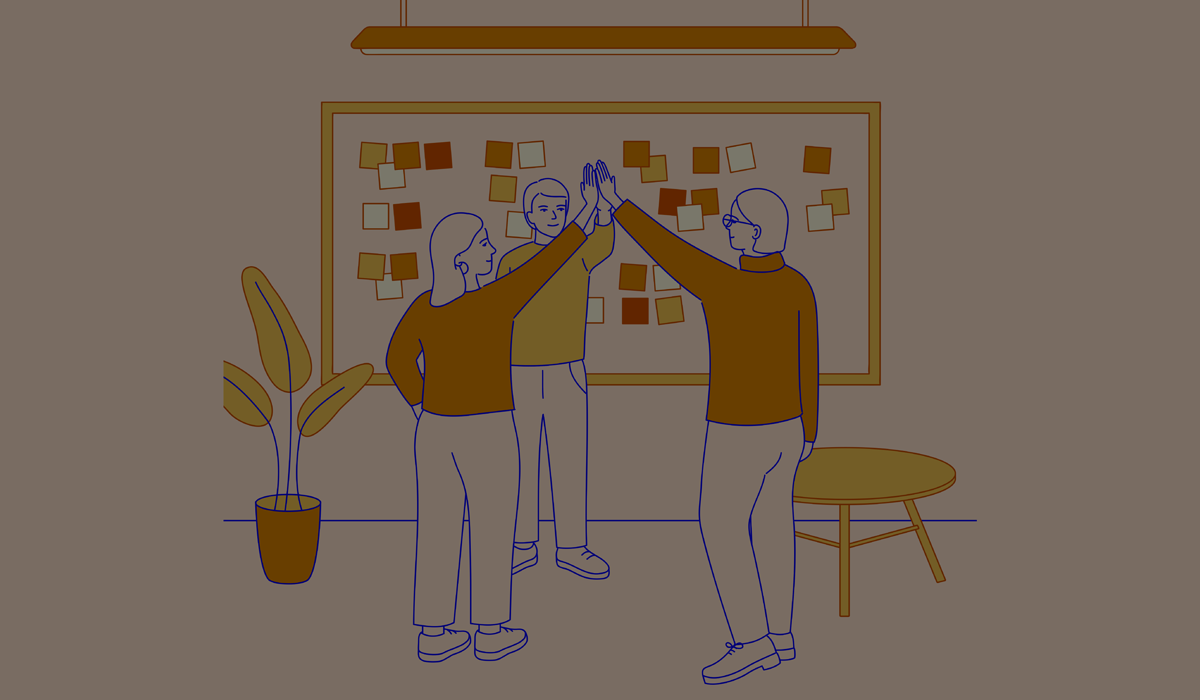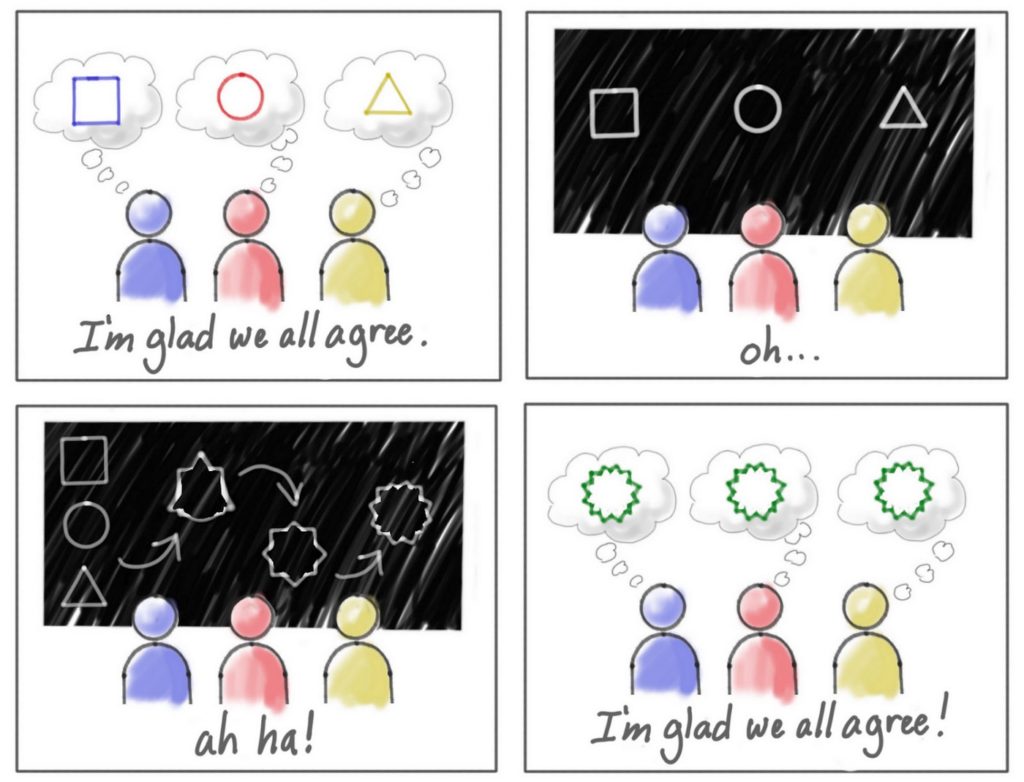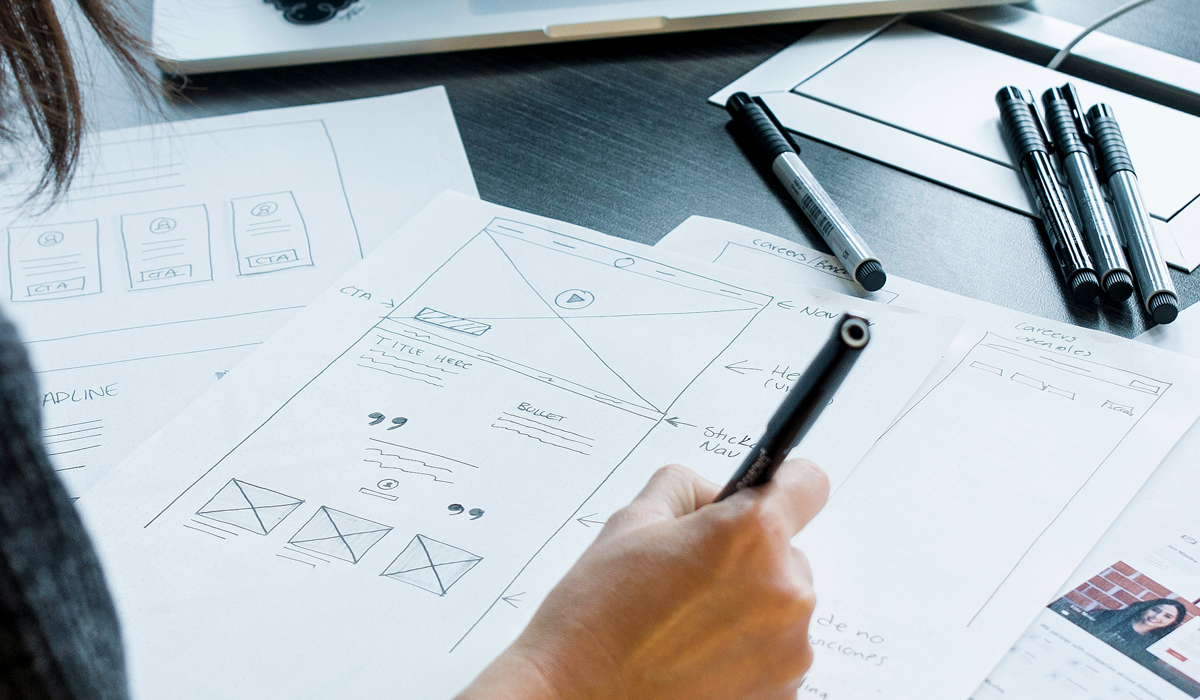For many years, innovation was a game only lone geniuses would play: Da Vinci, Newton, Tesla, Edison. Outliers who revolutionized the world with their craft by working in solo mode.
Today, this is no longer the case. Quality products and services are the result of multidisciplinary teams working in orchestration: designers, developers, product managers, marketers, data analysts. All of them co-creating the solution.
But effective team collaboration can be a tough challenge given the wide variety of working styles, gaps in communication, company culture, biases people bring to the workplace, and now, our remote environment.
This is where properly executed UX workshops become a valuable resource for companies, as these collaborative sessions empower teams to have discussions that matter in a structured way, to reach a shared understanding.
Defining UX workshops
A UX workshop is a series of divergent/convergent group activities led by a facilitator, taking place in an isolated room(either physical or virtual).
The duration of a workshop can range from 90 minutes (such as a Lightning Decision Jam) to even 4-5 days (a design sprint).
Although providing high value, workshops also demand high effort, as it can be difficult for stakeholders to agree on seeing the value of the exercises, and releasing their agendas without multi-tasking during the sessions.
To support workshop facilitators and spread the value of workshops, I’ve created a step-by-step process for facilitators and teams to leverage and make the most out of the sessions, even in a remote environment.
Step 1: Define business impact
The first step before conducting a workshop is defining the impact we want to generate in the organization, and acknowledge the available resources (people, tools, time) we can use to deliver it.
To do so, you can rely on Project Logic Models.
Popularized by Josh Seiden in his book Outcomes Over Output, a Project Logic Model allows teams to connect the dots between how they allocate their resources (inputs), and the value it generates (impact), through activities that create outputs, and outputs that bring outcomes.
A common mistake a lot of teams make is starting with the activities (e.g. let’s do a design sprint!) before considering the outcomes and impact such activities should deliver.
To uncover business impact, you don’t necessarily need a workshop, as you can approach main stakeholders through interviews and ask questions around the definition of success of the project, the way to measure it, and the long-term goals of the organization.
By running several interviews, you will start identifying patterns in terms of what impact means. This definition might be as unique as the company itself; however, a straightforward way to classify it is by the five categories Jared Spool states:
- Increase in overall revenue
- Decrease in operational costs
- Increase in revenue from new business
- Increase in revenue from existing business
- Increase shareholder value
Step 2: Choose your exercises
Once you define the impact, you are in a better position to identify how a workshop can help you figure out the in-between — activities, outputs, and outcomes.
Depending on the questions you have and the gaps in your understanding of the problem and solution space, you will select which exercises will help you move the project forward.
Exercises for workshops can be divided by the questions teams need to answer:
Discovery: What are the challenges we’re facing?
The objective of these exercises is to explore the problem space and the current state of the experience. A great example of a discovery exercise is a lightning decision jam.
Alignment: How can we agree on a direction?
Making decisions around where the focus and priorities are, is the name of this game, and it’s achieved through exercises such as Experience Canvas, or How Might We’s.
Ideation: How might we solve our challenges?
Divergent by definition, ideation exercises prioritize quantity over quality and can be run through Crazy 8’s, Storyboarding 2.0, or Brainwriting.
Step 3: Define the attendees
There is no magic formula to define who should participate in a workshop because of organizational politics and diversity of departments. However, you can consider the following roles as a baseline:
- Voice of the customer: designers, front-desk staff, call center, or any other department who understand the challenges and pain points of customers
- Business: top executives, business analysts, business intelligence, product managers, or any other role with enough context on how the business makes money, and what is the long-term vision of the company
- Technologists: developers, engineers, data scientists, or any other role capable of providing insights into what is technically possible versus constraints
- Subject-matter experts: roles who understand very well the industry, the needs of power users, or the nuances of the tasks they do
- (Nice-to-have) Operations: for companies delivering services, getting to know the supply chain, the way different touchpoints interact, as well as the responsibilities of internal departments, can be a great advantage
Step 4: Secure logistics
You should anticipate at least one thing to go wrong during a workshop, but we can make sure it is just one thing. Nothing beats a concise checklist to review one day before the sessions.
- Ask everyone to confirm participation through email or calendar.
- Materials: Post-its, sharpies, dot stickers, sheets of paper, tape. Or templates if you’re facilitating remotely. You might even need to send participants information upfront about how to use the tools.
- Cables and dongles
- Check the room (or the Zoom): If you don’t know where the session will take place, make sure you discover it way before the workshop begins.
Step 5: Run the workshop
You did a great job so far. Envisioning the outcome, choosing exercises, inviting the right people, double-checking logistics.
Now it is time to facilitate.
Facilitation is a broad topic that would require an entire blog post, so I would limit this step only to provide a checklist with rules of thumb to follow when running workshops. If you’re interested in doubling down on facilitation, feel free to check the resources at the end of the story.
Start with the desired end state
By the end of the session, we will… is a great way to start a workshop, followed by going through the agenda so everyone knows what to expect, and you make sure no one brings a different issue during the session.
Use ice-breaker exercises
Chances are participants will not be familiar with the divergence > convergence process, so ice-breakers such as the nine dots can set the tone for people to think outside the box during the workshop.
Set ground rules
To ease the facilitation, you need to be transparent with your participants and have their support during the session. Setting ground rules upfront can help you manage this. Some examples of ground rules:
- Parking lot: Let the team know that the parking lot is where you will channel the conversations, which might need to be postponed.
- Leveling the field: During the session, there should not be any hierarchies or HiPPOs (Highest Paid People Opinion). Everyone should be able to participate and contribute to foster idea meritocracy.
- Together but alone: Remind the team that sometimes they will work generating ideas alone, and sometimes as a group. It is essential to avoid groupthink.
One conversation at a time
Avoid at all costs having multiple discussions at the same time, since this will not allow you to identify the signal from the noise, and it will not allow teams to learn from each other if they are not listening.
Step 6: Socialize
It is a great practice to finalize the sessions with clear next steps, such as action items and owners. However, sometimes you will need to synthesize and digitize first before socializing.
A great way to keep the momentum after a workshop is sending a recap email to the participants with a summary of the activities, agreements, and photos of the sessions, as well as following-up with them to acting upon the decisions made.










